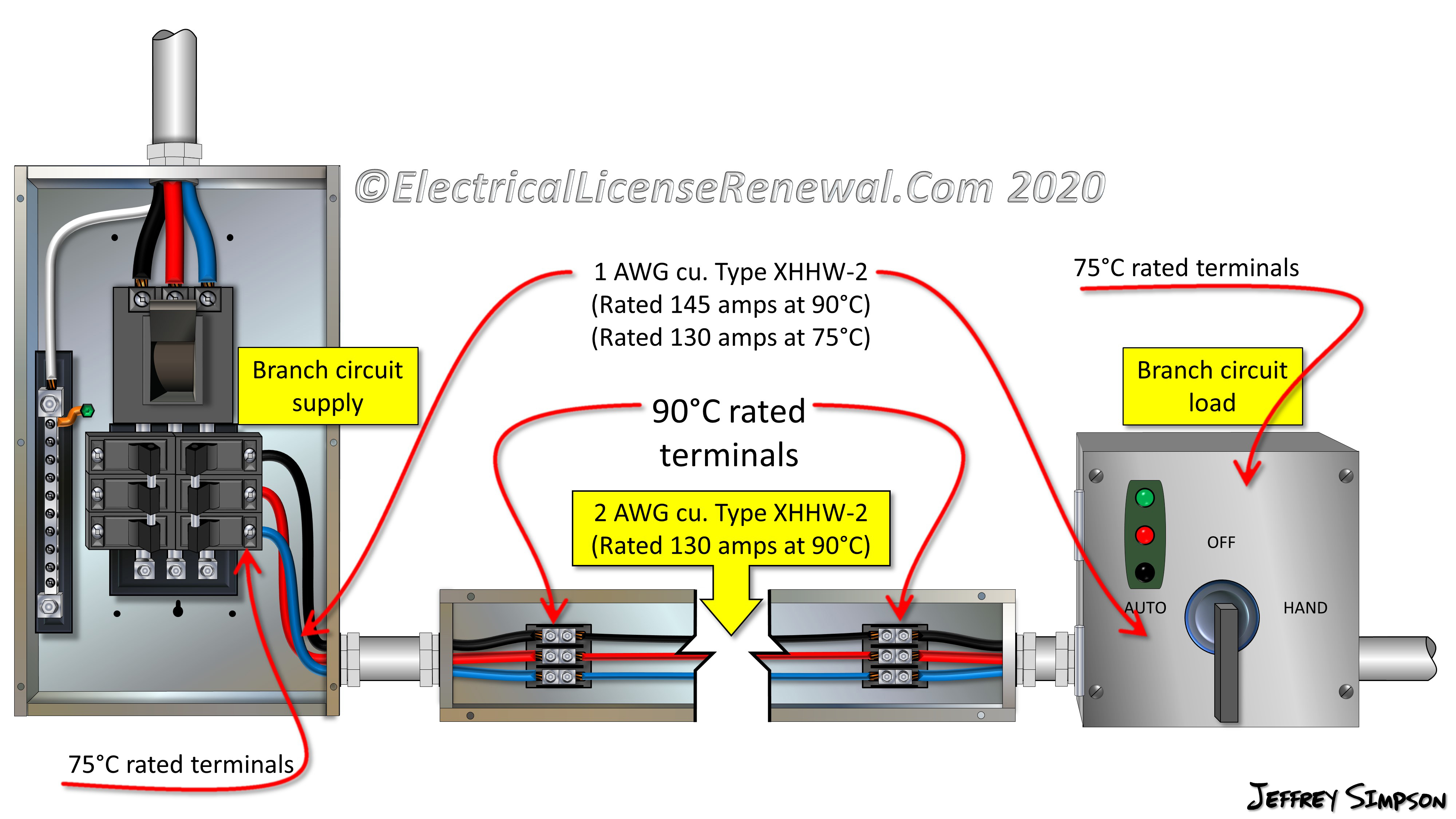In a commercial building, there is an existing 208V 3-phase 100A fused disconnect (Sylvania GTE RHD323SN) feeding a 225A panelboard (Sylvania GTE ). I'll be replacing the existing panelboard with a Schneider Electric NQ442L2C.
The existing feeders are 1 AWG THW aluminum conductors (current carrying & grounded). However, I can't find any markings on the disconnect or the existing panelboard to indicate that the terminals are rated at 75°C. By my understanding of NEC 110.14(C)(1)(a), if the equipment is not listed and identified for 75°C terminations, then you're required to size the feeders using the 60°C column in Table 310.15(B)(16).
So it seems to me that whoever designed and installed the existing feeders undersized them. Instead of 1 AWG aluminum, they should have been 1/0 aluminum (or 1 AWG copper). Am I correct?
The existing feeders are 1 AWG THW aluminum conductors (current carrying & grounded). However, I can't find any markings on the disconnect or the existing panelboard to indicate that the terminals are rated at 75°C. By my understanding of NEC 110.14(C)(1)(a), if the equipment is not listed and identified for 75°C terminations, then you're required to size the feeders using the 60°C column in Table 310.15(B)(16).
So it seems to me that whoever designed and installed the existing feeders undersized them. Instead of 1 AWG aluminum, they should have been 1/0 aluminum (or 1 AWG copper). Am I correct?

